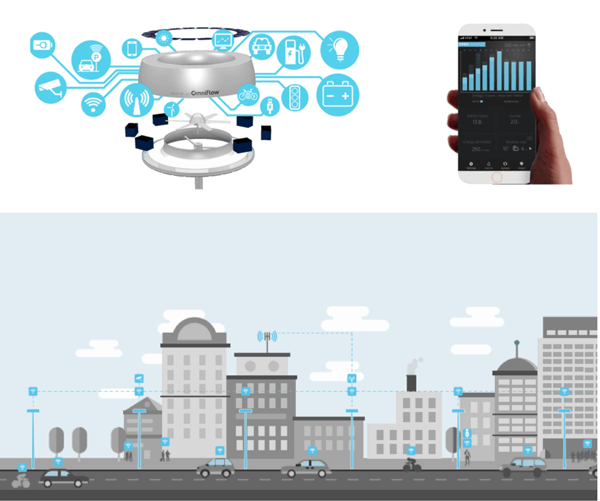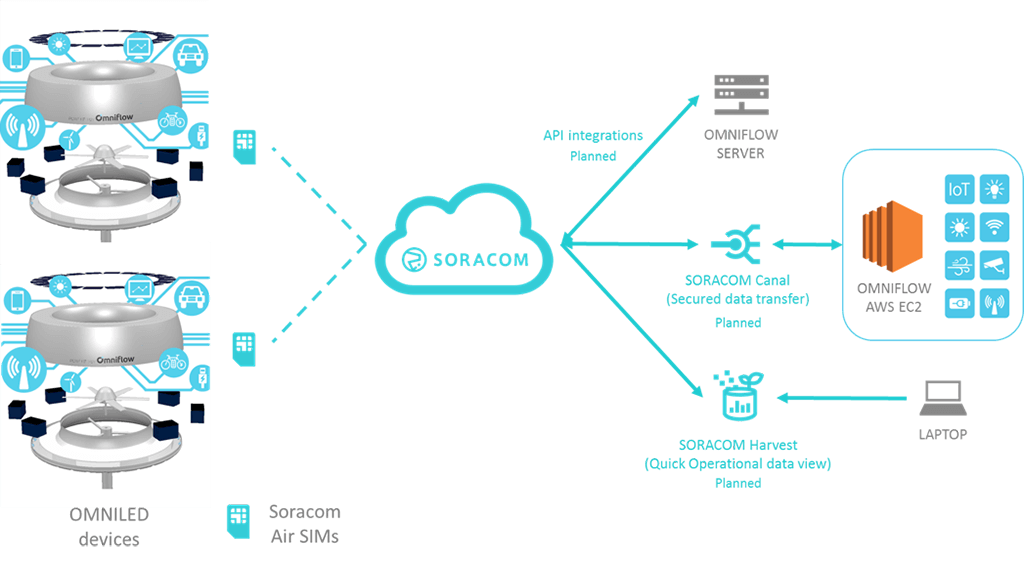Energy Industry IoT Solutions and Connectivity


It’s been twenty years since WIFI first enabled wireless internet connectivity. Since then, we’ve seen wireless networking progress to the era of IoT, a world of intelligent and cooperative devices designed to bring heightened efficiency and productivity to our daily functions.
These connected machines hint at a new “industrial revolution”, with many experts predicting there will be as many as 26 billion connected devices by 2020.
With this in mind, it’s not difficult to see why IoT (and its evolution from M2M) is a hot topic in today’s tech scene – it facilitates virtually limitless opportunities and combinations across multiple platforms, industries and technologies.
The language of the future will be millions of simple, yet “intelligent” devices collaborating with one another and sending data to the cloud.
We are increasingly living in a connected world where coffee pots can synchronize with alarm clocks, production lines can troubleshoot problems as they appear, and municipal lighting systems can be optimized based on pedestrian traffic, weather and time of day.
And in this world, the evolution of IoT is heavily dependent on cloud-based services and ubiquitous connectivity.
IoT and cloud services are evolving together at a rapid pace. As IoT becomes more of a mainstay in our lives, cloud-based services will continue to evolve in order to meet our growing needs.
Amazon Web Services, Google Cloud Platform, and Microsoft Azure are launching new services and gaining new capabilities at a faster rate than ever before. Because of this, we are seeing monumental developments in cloud computing and storage.
Peter DeSantis, AWS Vice President of Infrastructure and Customer Support, recently described how the company is designing custom chips to address complex systems such as drug discovery, oil exploration and artificial intelligence; all industries that are increasingly cloud-based.
However, as with existing IT systems, storing sensitive data on a cloud-based server and connecting multiple devices highlights the importance of network security.
Tampering with a toaster can provide hackers with a backdoor into other connected devices, including security systems and personal computers.
The type of network you use can have an impact on the security of your connection, with more secure networks limiting any risk of tampering.
Connecting devices to the internet using a wired LAN works, but there are obvious mobility limitations with a wired network.
Wireless LANs are widely used by people that are hosting connected devices. However, these networks are susceptible to security breaches. Hiring a specialist to install your wireless LAN can cost you time and money that could be better spent elsewhere.
Depending on your situation, the ideal network for IoT can be an LTE/3G mobile connection, such as those used by smartphones. This is because they can connect immediately, from virtually anywhere, ensuring your devices remain secure and up to date.
Considering mobile networks are often geared towards individuals and their smartphones, prices are often relatively high compared to wifi and other types.
However, there are options that are far more cost effective than others, so it’s important that you do your research.
IoT in the Smart Energy Sector

With 127 new devices connecting to the Internet every second, IoT is showing no signs of slowing down.
One of the industries seeing rapid innovation through IoT is smart energy.
The energy sector is undertaking a monumental transformation that addresses the impact of remote management, hybrid vehicles, renewable energy, and smart meters, introducing new challenges and opportunities for people and businesses alike.
IoT is facilitating the transition away from antiquated control systems, which often generated excess energy that couldn’t be consumed due to unforeseeable outages, toward a bidirectional “smart energy” ecosystem.
Consumers are becoming “prosumers,” producing their own electricity through solar panels and other renewable technologies. If there is an energy surplus, it can now be fed back to the local grid.
In the past, energy was often produced from fossil fuels. Created in a power plant, energy was shipped off to communities and households based on how much was needed.
As demand increased during peak hours, the powerplant began creating more energy.
Smart energy is moving away from the old model of meeting demand with supply, towards meeting supply with demand.
By combining remote monitoring and big data analytics, smart energy systems are able to ensure that demand is exactly met by supply, with little to no waste.
Real-Life Examples of IoT Energy Applications
When businesses or industries fail to meet consumer demand, competition can easily swoop in to take advantage, often armed with disruptive tech.
This can happen to any industry and is currently playing out with the rise of fintech and blockchain in the payments industry.
IoT is democratizing the energy sector, allowing more players to participate in once-monopolistic utility markets.
This transition has opened the door to countless 3rd-party energy providers who are now innovating in ways that are reshaping the sector.
Florida-based Duke Energy has created a “self-healing grid system” capable of automatically re-calibrating itself after a power outage.
 Smart sensors on power lines can detect problems as they appear, communicating with control systems that can easily and automatically isolate the damaged section of line. The control system then optimizes the best way to re-route power to as many people as possible in the case of an outage, before fixing the power problem at hand, all in under a minute.
Smart sensors on power lines can detect problems as they appear, communicating with control systems that can easily and automatically isolate the damaged section of line. The control system then optimizes the best way to re-route power to as many people as possible in the case of an outage, before fixing the power problem at hand, all in under a minute.
The impact of power loss can be fatal anywhere but it’s particularly devastating in large metropolitan cities like Tokyo or San Francisco, especially when hospital care and public transportation are affected.
On the topic of safety, Pacific Gas and Electricity Company (PG&E) is currently testing safety drones capable of detecting methane leaks across its 70,000 square-mile service area. These drones can communicate their findings to a control system which automatically records and isolates leaks until a crew can be called out to perform maintenance operations.
Safety drones can be effectively implemented in multiple industries to lower employee risk in locations such as chemical labs, nuclear factories and mining companies.
The potential of IoT hasn’t been lost on automotive manufacturers either.
Nissan is one of the first automobile companies to invest in IoT technology with its “Vehicle-to-Grid” system, which allows drivers to use, store and return excess energy to the their house or to their local grid.
Essentially, IoT is redesigning how we think of vehicles. Rather than serving strictly as a method of transportation, vehicles are now becoming a crucial part of how we store, conserve, use, and distribute energy in our daily lives.
IoT Infrastructure Empowers Smart Cities

A perfect hotspot for smart energy and IoT applications can be found in smart cities.
Each is an enormous ecosystem filled with multiple moving parts that, prior to IoT, operated in their own silos.
For this very reason, “dumb” cities are subject to inefficiencies across multiple crucial systems, from lighting and public transportation to traffic monitoring and waste management.
Smart cities and buildings benefit from an intelligent public/private infrastructure which optimizes processes through connected devices communicating with one another.
In Singapore, we’re seeing connected devices and IoT technology bring a new heightened level of intelligence to their public infrastructure.
They’ve used road sensors, intelligent lighting and traffic analytics to improve the average speed of vehicles on Singaporean highways, while limiting the number of crashes and injuries.
With driverless cars starting to emerge in Singapore, it’ll be interesting to see how their transport network evolves in the next few years.
Oslo is routinely cited as one of the global leaders in smart city technology.
By 2020, the city plans to remake its transportation grid, which is expected to cut emissions in half. Ten years after, it’s aiming to be 95% climate neutral.
Along with intelligent lighting, smart meters and a plethora of connected grid projects in the works, it’s likely that Oslo will reach their goals.
Smart cities can provide citizens with 21 days of extra time every year, allowing them to live healthier and happier lives.
For example, businesses can have sensors that detect if a room is being occupied.
This informs users when heating and cooling can be turned off, which saves money that can be better spent on inventory, and stores energy that can be better used elsewhere.
On the topic of temperature, connected devices can bring a new level of intelligence to agriculture as well.
Sensors can monitor humidity, soil moisture and light, and if any variables are below standard, users can be notified, or processes can be initiated to address the problem.
This can improve labor productivity, crop quality and energy consumption.
These sensors can also save lives.
When a massive earthquake hit China in 2017, there was little to no warning for citizens.
To better prepare for another similar disaster, China are trialing a disaster monitoring system fueled by IoT technology, which will run on China Mobile’s existing LTE network.
This will ensure that alerts can be publicly broadcasted, so that citizens can be prepared for future incidents.
IoT sensors have countless applications in smart cities, such as streetlights and smart meters. In these scenarios, connected devices can mitigate traffic, improve sanitation, conserve energy and reduce crime all through an automated system.
The emergence of smart cities represents one step toward this future, with an entire network of various devices performing unique tasks, and the benefits of these collaborations can already be found in the data.
OMNIFLOW: An IoT/M2M Smart Energy Solution

A perfect example of how IoT can be applied within smart cities is OMNIFLOW, a start-up providing autonomous renewable energy to urban and rural areas.
With their product OMNILED, OMNIFLOW has created an automated energy solution that can store energy and be remotely monitored and controlled from anywhere in the world.
OMNILED offers solar and wind chargers for the daytime and runs on battery at night, making it a perfect solution for areas where permanent wiring would be difficult. Essentially, OMNILED brings light to areas where public lighting would otherwise be difficult to deploy.
OMNIFLOW allows users on its platform to monitor the system’s performance anytime, anywhere. Plus, it enables each individual application to be independently controlled, providing total control over the system.
With OMNILED, users can control:
- Smart lighting
- Wi-Fi hotspots
- Small cell base stations
- USB charging stations
- Surveillance
- Smart parking
- Traffic and pedestrian counts and analytics
These applications provide significant value to a variety of different businesses and industries, including smart cities.
Intelligent lighting can drastically reduce energy costs so capital can be better invested elsewhere.
Plus, being able to actively monitor and control video analytics for applications like surveillance and smart parking can provide you with consumer behavior, security conditions and traffic congestion.
This information provides businesses and other organizations with pertinent data that can keep them safe and secure.
To achieve their goals, OMNIFLOW needed an M2M network partner capable of providing them with a secure, cost-competitive, global solution that wasn’t power intensive, and could be applied to each individual unit of their system.
SORACOM, the cloud-connectivity-as-a-service platform was able to help them start saving money from day one.
OMNIFLOW’s mission is to democratize a global energy sector that take advantage of businesses with high energy costs and inefficiencies.
Similarly, Soracom democratizes IoT communications and connectivity, leveling the playing field so that anyone can experiment with IoT and cloud-based connectivity.
Soracom seamlessly integrated with OMNIFLOW’s operations, allowing them to continue saving money while becoming even more cost-competitive for their customers.
Running on a secure LTE/3G cellular network, Soracom users benefit from unlimited access worldwide on all of their connected devices.
This was crucial for OMNIFLOW, as their OMNILED platform has been installed in over 10 different countries to date, with many more coming in the foreseeable future.
Based in Portugal, OMNIFLOW is dedicated to providing excellent service around the world, regardless of where devices are located.

SORACOM’s cellular network enables OMNILED to keep that promise.
Users around the world don’t have to worry about whether or not they can connect based on their location.
SORACOM’s network is built on Amazon Web Services, a trusted cloud-based server with the latest in security and verification.
Plus, Soracom’s cloud native connectivity ensures that devices can be directly connected to the cloud rather than the public Internet, simplifying development and increasing security of IoT solutions.
Many vendors still don’t understand connected devices. They force you to purchase a 1GB card, regardless of how much data you actually plan on using.
If you’re purchasing 1000 SIM cards for your 1000 connected devices but you only need 1MB for each card, the difference between what you pay for and what you use can make or break a project..
Soracom understands every business is unique, which is why it charges users for the data that they need. Nothing more, nothing less.
Service starts at $0.06 per SIM card per day and can be suspended when necessary. You have complete control over how much you use, and therefore, how much you spend.
For users with thousands of devices, this translates to real cost savings and managing them all has never been easier!
Soracom provides users with API integration that can easily apply configurations to entire groups of devices.
And since there’s no need to deploy certificates for edge devices, IoT developers can completely avoid the cost and headaches associated with certification.
Once you purchase a Soracom SIM card, you no longer need to forecast how much data you need for your devices. No contract, no commitment – simply pay for what you use.
If you purchase more than one card, Soracom aggregates the data you use across all over your devices, further simplifying the process.
This saves even more money, and was one of the biggest reasons why OMNIFLOW initially decided to partner with Soracom.
“The main reason we choose Soracom as our partner was because of pricing,”
said Pedro Ruão, CEO of OMNIFLOW“We are consuming little bits/chunks of information. The market wasn’t ready for that and Soracom was.”
Soracom provides OMNIFLOW and other businesses with the flexibility and customization necessary to thrive in today’s connected business world.
Whether you want to change your data communication speed, start or stop an individual SIM card, or monitor data usage, Soracom offers tools and resources to help users take their projects to the next level.
SORACOM Air offers extensive monitoring capabilities that allow IoT consumers to analyze the health of their IoT infrastructure, enabling them to quickly identify and troubleshoot any issues as they appear.
IoT system managers can also use these comprehensive analytics to make informed decisions on their operations, such as when to turn lights on, start machinery or pause a program, all from their API or user console, which is accessible by web browser.
We’re living in a world where 75% of IoT projects fail, many because of budget overruns and delayed processing. This doesn’t have to be the case.
In three years, Soracom has helped over 10,000 consumers productize IoT.
With live support and API integration, it’s never been easier to build your IoT project
We’ve made cloud-based connectivity quicker, cheaper, safer and more accessible than anything else on the global market.
Soracom solutions have helped one customer, that from one to 30k global SIMs, reach market with their product in as little as 62 days.
Our team has over 50 years of combined experience AWS and IoT experience, with awards from Forbes, TechCrunch and more.
Soracom is a platinum-certified AWS Advanced Technology Partner for IoT competency.
Book a meeting with our dedicated team today to see how Soracom can support your IoT project.





